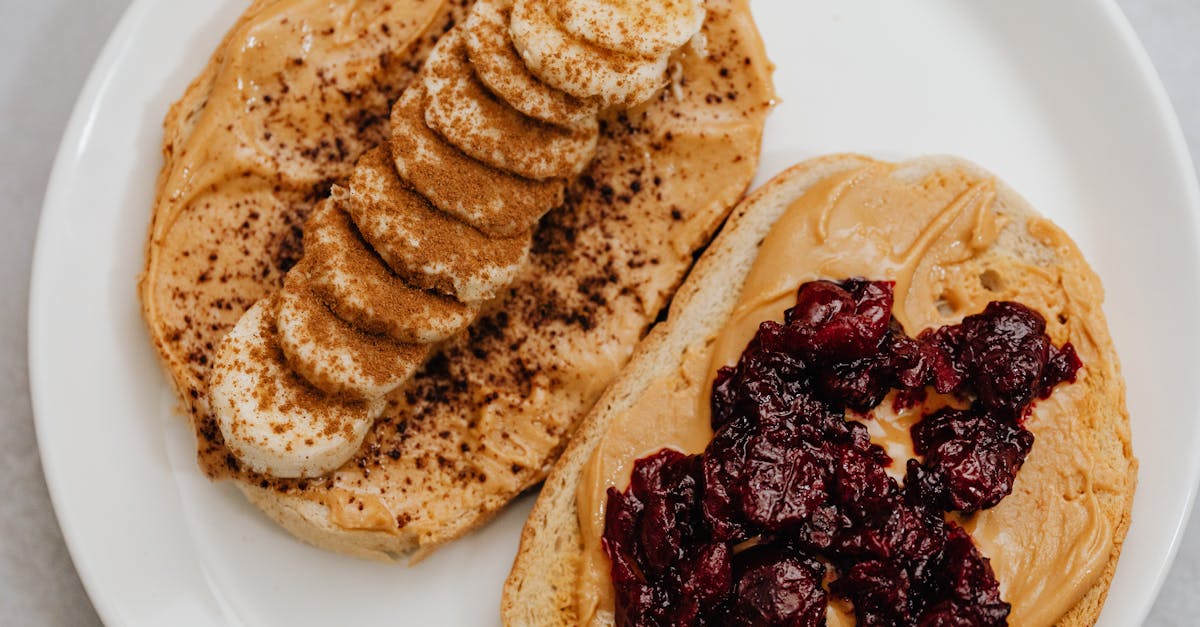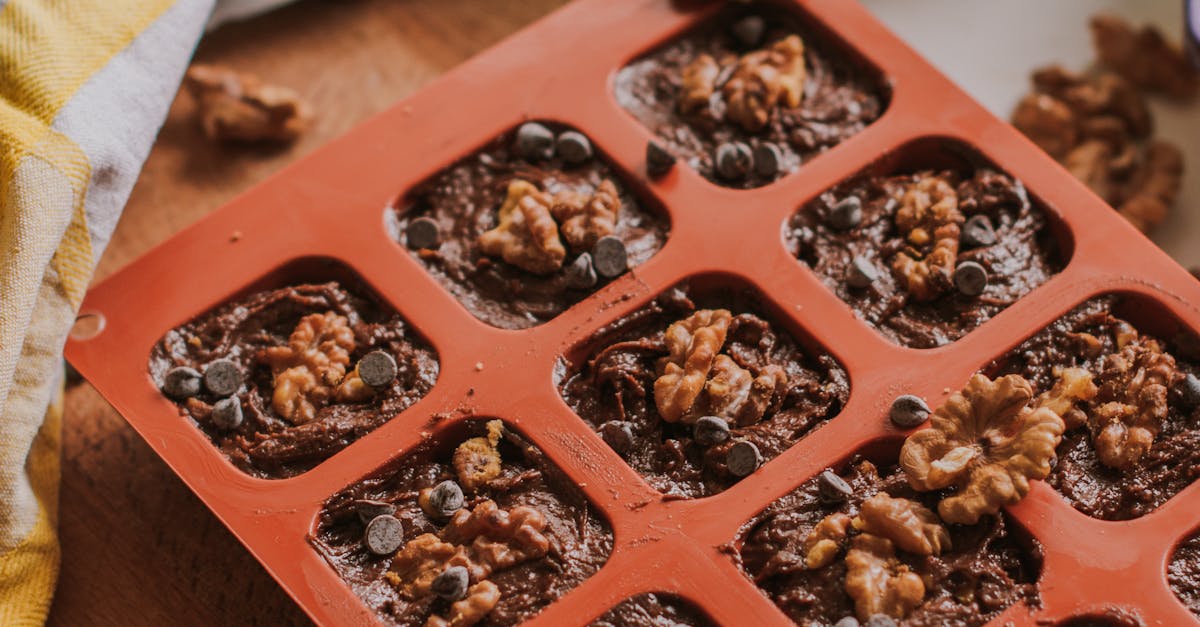Ever stared blankly into your pantry, realizing you’re missing a key ingredient for that killer cake recipe? Don’t despair, baking heroes! Knowing a few clever ingredient substitutions can transform you from a frustrated baker into a baking ninja. This isn’t just about rescuing a recipe in a pinch; it’s about unlocking a world of culinary creativity and expanding your baking horizons. Think cost savings by using what you have on hand, reducing food waste by repurposing leftovers, and even experimenting with unique flavors and textures you never thought possible. From mastering flour swaps to understanding the magic of leavening agents, this guide is your secret weapon for perfect results – every time. Get ready to conquer those baking emergencies and unleash your inner baking genius!
Key Baking Substitution Insights
- Mastering substitutions saves time, money, and reduces food waste: Knowing how to swap ingredients empowers you to bake more efficiently and creatively, using what you have on hand.
- Understanding ingredient roles is crucial: Before substituting, analyze the recipe to understand each ingredient’s function (moisture, binding, leavening, etc.). This ensures successful replacements.
- Flour substitutions require careful consideration: Different flours (e.g., almond, coconut, oat) have varying properties. Adjust liquid ratios and baking times based on the flour’s absorbency and density.
- Sugar and fat substitutions impact texture and flavor: Natural sweeteners (honey, maple syrup) add unique flavors and moisture. Sugar-free options require precise measurements to avoid aftertastes. Fat substitutions (applesauce, oils) change moisture and density, so recipe adjustments are often needed.
- Experimentation is key: Don’t be afraid to try different substitutions! Keep notes to track successful swaps and learn from your experiences. Baking is a journey of discovery!
1. Why Baking Substitutions Matter: From Pantry Fails to Creative Baking
Let’s be real, sometimes life (and our pantries) throw us curveballs. You’re halfway through a recipe, craving a warm chocolate chip cookie, only to realize you’re out of brown sugar. Panic sets in! But hold your horses, baking enthusiast! That’s where the magic of substitutions comes in. Knowing a few clever swaps can be a game-changer, saving you precious time and the dreaded last-minute dash to the store. Think of the money you’ll save by using what you already have! No more impulse buys of ingredients you may only use once. Plus, substitutions open up a whole new world of culinary adventures. Maybe you’ll discover a new favorite flavor combination by accidentally using almond flour instead of all-purpose flour – sometimes, happy accidents make the best recipes.
Beyond the convenience and cost savings, substitutions are a fantastic way to unleash your creativity. They challenge you to think outside the box, experimenting with different textures and flavors. Suddenly, that forgotten jar of applesauce becomes a potential butter substitute, adding moisture and sweetness to your muffins. The possibilities are endless! This isn’t about settling for second best; it’s about adapting and improving upon the recipes you love, resulting in delicious and personalized treats.
Mastering substitutions empowers you to take control of your baking journey. You’re no longer limited by strict ingredient lists; you’re the architect of your own delicious creations. This guide will equip you with the knowledge and confidence to tackle any baking emergency, turning potential recipe disasters into triumph. So ditch the baking-related anxiety and embrace the exciting world of substitutions – your taste buds will thank you!
The Unexpected Benefits of Ingredient Swaps
Let’s face it, baking can get expensive! Those specialty flours, gourmet chocolates, and unique extracts can quickly add up. But what if I told you there’s a way to keep your baking budget in check? Ingredient substitutions are your secret weapon against runaway grocery bills. By cleverly swapping ingredients, you can often use items you already have on hand, preventing unnecessary trips to the store and reducing impulse buys of ingredients you might only use once. Think of all the money you’ll save by transforming those pantry staples into baking gold!
Common Baking Emergencies and Quick Fixes
We’ve all been there: you’re ready to bake, measuring cups in hand, only to discover a crucial ingredient is MIA. Don’t let a missing ingredient derail your baking dreams! Baking emergencies happen, but with a little know-how, you can transform those potential disasters into delicious triumphs. Imagine the scene: you’re whipping up a batch of fluffy pancakes, only to find you’re completely out of baking powder. Panic? Not anymore! We’ll equip you with quick fixes to handle common baking emergencies, turning those unexpected situations into opportunities to showcase your baking prowess.
From the dreaded “out of baking powder” scenario to the less-than-ideal discovery that you’ve run out of eggs, we’ll provide simple and effective substitutions. We’ll cover common problems and give you practical solutions, including the science behind why these substitutions work. No more frantic grocery store runs in the middle of your baking project; our guide will provide the confidence to navigate any ingredient shortage with grace and skill.
This section isn’t just about quick fixes; it’s about understanding the core principles of baking. Knowing why certain ingredients function the way they do will enable you to adapt recipes to fit your available resources, making you a more resourceful and resilient baker. So, ditch the stress and embrace the unexpected—with a few handy tricks up your sleeve, you’ll be baking like a pro, regardless of pantry surprises!
2. Flour Power: Mastering Flour Substitutions
Flour: the foundation of countless baked goods. But not all flours are created equal! From the everyday all-purpose flour to the increasingly popular gluten-free alternatives, the world of flour offers a vast landscape of textures, flavors, and baking properties. Understanding these differences is key to mastering flour substitutions and achieving consistently delicious results. This section will guide you through the nuances of various flours, empowering you to confidently swap one for another without compromising the quality of your baked goods. We’ll explore popular alternatives like almond flour, coconut flour, and oat flour, highlighting their unique characteristics and how they impact the final product.
All-Purpose Flour Alternatives: From Gluten-Free Blends to Almond Flour
So, you’re out of all-purpose flour but still craving that delicious cake? No problem! The world of flour alternatives is vast and exciting. Let’s dive into some popular options and see how they measure up. Almond flour, with its subtly nutty flavor, creates wonderfully moist and tender baked goods. However, it’s naturally denser than all-purpose flour, so you might need to adjust liquid ratios in your recipes. Coconut flour, on the other hand, is super absorbent and adds a distinct coconut flavor. It tends to create denser, cakier textures, so it’s best suited for recipes that already lean towards that style, like muffins or quick breads. Keep in mind that it requires careful attention to liquid amounts to avoid overly dry results.
Oat flour is a versatile choice, offering a slightly sweet and hearty flavor. It produces a denser texture compared to all-purpose flour, making it a good option for cookies or cakes where a chewier consistency is desired. For those following gluten-free diets, pre-made gluten-free flour blends, like those offered by Bob’s Red Mill [link to Bob’s Red Mill website could go here], are an excellent option. These blends often combine different gluten-free flours (like rice flour, tapioca starch, and potato starch) to mimic the texture and baking properties of all-purpose flour. Experimenting with different blends can help you find the perfect match for your baking needs.
Remember, when substituting flour, it’s not just about a simple one-to-one swap. The texture and moisture content of different flours vary significantly, so understanding these differences will help you achieve the best results. Don’t be afraid to experiment and adjust recipes based on the specific flour you’re using. With a little practice, you’ll become a flour-substitution master in no time!
The Science Behind Flour Substitutions: Gluten and More
To truly master flour substitutions, it helps to understand the science behind it all. The magic (or sometimes, the mystery!) lies largely in gluten and starch. Gluten, a protein found in wheat flour, is responsible for the elasticity and chewiness in many baked goods. When wheat flour is mixed with water, gluten strands form, creating a network that traps gases produced during leavening, resulting in a light and airy texture. This is why substituting wheat flour with gluten-free alternatives often requires adjustments to achieve a similar rise and texture.
3. Sweet Success: Sugar Substitutions for Healthier Baking
Sugar: the quintessential baking ingredient, responsible for sweetness, browning, and moisture. But reducing sugar intake or exploring alternative sweeteners is becoming increasingly popular. Luckily, there’s a whole world of options beyond refined white sugar! This section explores various sweeteners and their applications in baking, helping you create delicious treats while catering to dietary preferences or health goals. From natural sweeteners like honey and maple syrup to sugar-free alternatives such as erythritol and stevia, we’ll discuss their unique properties and how they impact your baked goods.
Natural Sweeteners: Honey, Maple Syrup, Agave Nectar
Let’s explore the delicious world of natural sweeteners! Honey, with its rich flavor and inherent moisture, adds a lovely depth to baked goods. However, its strong flavor profile might not be suitable for all recipes, and it can affect the browning process. Maple syrup, another fantastic option, brings a distinct caramel-like taste and adds moisture. Keep in mind that its higher water content might require slight adjustments to your recipe’s liquid amounts. Agave nectar, known for its mild sweetness, provides a smooth texture and blends well into various baked goods. But be aware that it has a higher fructose content compared to other natural sweeteners, so use it judiciously.
Sugar-Free Sweeteners: Erythritol, Stevia, Monk Fruit
Sugar-free sweeteners offer a compelling alternative for those watching their sugar intake, but they require a bit more finesse. Erythritol, a sugar alcohol, boasts a mild sweetness and is well-tolerated by many. However, using too much can result in a slightly cooling sensation. Stevia, a natural zero-calorie sweetener derived from a plant, is intensely sweet, so a little goes a long way. It’s crucial to use precise measurements to avoid an overly bitter aftertaste. Monk fruit, another natural zero-calorie sweetener, offers a mild sweetness with a clean finish—a great option if you’re sensitive to the aftertaste of some sugar-free sweeteners.
4. Leavening Agents: Baking Powder, Baking Soda, and Beyond
Leavening agents: the unsung heroes of fluffy cakes and airy cookies. These crucial ingredients are responsible for the rise and texture of your baked goods. Baking powder, a complete leavening agent, contains both an acid and a base, creating a chemical reaction that produces carbon dioxide gas when mixed with liquid. Baking soda, on the other hand, is an alkaline base that requires an acidic ingredient (like buttermilk or vinegar) to activate. Understanding the difference is key to successful baking and substitutions. If a recipe calls for baking powder and you’re short, you can sometimes substitute with baking soda, but you’ll need to add an acidic ingredient to the recipe to balance the reaction.
Baking Powder vs. Baking Soda: The Essential Differences
Baking powder and baking soda: often confused, but distinctly different! Baking powder is a complete leavening agent, meaning it contains both an acid and a base. When mixed with liquid, these components react to produce carbon dioxide gas, causing the batter or dough to rise. It’s a convenient one-stop shop for leavening. Baking soda, however, is just an alkaline base. It needs an acidic ingredient (like buttermilk, lemon juice, or vinegar) to trigger the chemical reaction that produces the necessary carbon dioxide for leavening. This means if a recipe calls for baking soda, you’ll need an acid in the recipe to get that rise.
Making Substitutions: When Baking Powder Fails You
So, you’re staring at an empty baking powder container? Don’t panic! While a direct one-to-one substitution isn’t always possible, you can often salvage the situation. If your recipe calls for baking powder and you only have baking soda, you can usually make it work. Remember that baking soda needs an acid to activate. For every teaspoon of baking powder, you can substitute with 1/4 teaspoon of baking soda and 1/2 teaspoon of an acidic ingredient, such as lemon juice, vinegar, or cream of tartar. The exact amounts might need some tweaking depending on the recipe, but this is a good starting point.
5. Fat Fantastic: Butter, Oil, and Other Substitutes
Fats play a crucial role in baking, contributing to flavor, texture, and moisture. Butter, with its rich flavor and ability to create flaky layers in pastries, is a baking staple. But what happens when you’re short on butter? Don’t worry, there are plenty of alternatives! Oils, like vegetable or olive oil, can often substitute for butter, though the resulting baked goods will have a slightly different texture—often moister and less flaky. The type of oil you choose will also impact the flavor, so consider this when making a swap.
Butter Alternatives: Applesauce, Greek Yogurt, and More
Running low on butter? No problem! Several pantry staples can step in to save the day. Applesauce, for instance, adds moisture and a subtle sweetness, making it a great choice for muffins, cakes, and quick breads. Just remember that it will result in a slightly denser and moister final product. Greek yogurt, another excellent substitute, brings moisture and a slight tang. It works particularly well in recipes where a richer, denser texture is desirable, like muffins or brownies. Be mindful that the tanginess might subtly alter the overall flavor profile of your baked goods.
Oil Substitutions: From Olive Oil to Avocado Oil
Oils offer a versatile alternative to butter, each imparting its unique flavor and texture to your baked goods. Olive oil, with its fruity notes, can add a delicious Mediterranean twist to cakes, muffins, and even some breads. However, its strong flavor might not be suitable for all recipes. Avocado oil, known for its creamy texture and mild flavor, is a great all-around choice, adding moisture without overpowering other flavors. It’s a healthy and delicious option for a wide range of baked goods. Vegetable oil, a neutral-flavored option, is perfect when you want the moisture and texture of oil without any significant flavor impact. The key is to choose an oil that complements the recipe’s overall flavor profile.
6. Eggs-cellent Substitutions: Binding Agents and More
Eggs play a vital role in baking, acting as binding agents, leaveners, and emulsifiers. But for those with egg allergies or following a vegan lifestyle, finding effective substitutes is crucial. Flaxseed meal, when mixed with water, creates a gelatinous substance that can mimic the binding properties of eggs. Simply combine one tablespoon of flaxseed meal with three tablespoons of water, let it sit for a few minutes to thicken, and use it as a replacement for one egg. Chia seeds work similarly, offering a slightly milder flavor. Applesauce, a pantry staple, can also substitute for eggs, adding moisture and binding power, particularly in cakes and muffins. Remember that these substitutions might slightly alter the texture and flavor of your baked goods, so experimentation is key!
Vegan Egg Replacements: Flaxseed Meal, Applesauce, and Chia Seeds
Creating delicious vegan baked goods relies heavily on finding effective egg replacements. Flaxseed meal and chia seeds are excellent choices because of their ability to form a gel-like consistency when mixed with water. This gel acts as a binder, holding the ingredients together and providing structure to the baked goods. One tablespoon of flaxseed meal or chia seeds mixed with three tablespoons of water will usually suffice as a replacement for one egg. The texture might be slightly different from a recipe made with eggs—often a bit denser—but the results are surprisingly close.
Considerations for Specific Recipes
While flaxseed meal, chia seeds, and applesauce work well in many recipes, some baked goods are more sensitive to egg substitutions than others. For instance, recipes relying heavily on egg whites for volume, like angel food cake or meringue, might require a different approach. Aquafaba (the liquid from canned chickpeas) can be a suitable alternative in these cases, offering similar whipping properties to egg whites. Similarly, recipes that utilize eggs for their emulsifying properties, such as creamy custards or some types of cakes, might require more careful consideration. Experimentation and potentially minor recipe adjustments might be necessary to achieve the desired outcome.
7. Milk Magic: Dairy and Non-Dairy Substitutions
Milk, whether dairy or non-dairy, adds moisture and richness to baked goods. But what if you’re out of milk, or following a dairy-free diet? Fear not! Many excellent alternatives are available. Soy milk, almond milk, and oat milk are popular choices, each imparting its unique flavor and properties. Soy milk offers a fairly neutral taste and works well in most recipes. Almond milk, with its subtly nutty flavor, can add a delightful touch to certain baked goods, but be aware that its thinner consistency might require slight adjustments in your recipes. Oat milk, increasingly popular, provides a creamy texture and a slightly sweet flavor.
Dairy Milk Alternatives: Soy Milk, Almond Milk, Oat Milk
Choosing the right non-dairy milk for baking can make a big difference in the final product. Soy milk, a long-time favorite, offers a relatively neutral flavor and works well in many recipes, often providing a similar result to dairy milk. Almond milk, with its subtly nutty flavor, is a delicious choice for recipes where a hint of nuttiness would complement the overall flavor profile. However, its thinner consistency might require a slight increase in the amount of other wet ingredients to compensate. Oat milk, known for its creamy texture and slightly sweet taste, is a fantastic option for adding richness and moisture to cakes, muffins, and quick breads. Its thicker consistency means it often requires less adjustment than almond milk.
Adjusting for Fat Content
Not all milks are created equal when it comes to fat content. This is a crucial factor to consider when substituting milk in baking recipes. Dairy milk typically contains a decent amount of fat, contributing to richness and moisture in baked goods. Non-dairy milks vary significantly in their fat content. For instance, full-fat coconut milk is very high in fat, while unsweetened almond milk is quite low. If you’re swapping a high-fat dairy milk for a low-fat non-dairy alternative, you might need to add a bit of extra fat to the recipe to compensate, perhaps in the form of oil or melted vegan butter. This will help ensure your baked goods achieve the desired moisture and texture.



